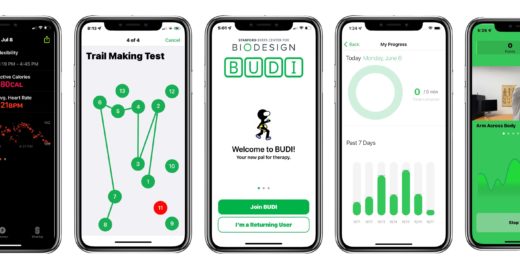Over the past 50 years, thousands of innovations from Stanford researchers have blossomed into tangible, sometimes life-changing advents for society -- think of the technology behind the world's most popular search engine, or a DNA cloning approach, broadly known as recombinant-DNA technology, that launched the biotechnology industry.
So how have trends in innovation evolved over this time, and what are the qualities of a successful invention versus one that's a flop?
In a study published in Patterns on Sept. 1, James Zou, PhD, assistant professor of biomedical data science, Ph.D. student Weixin Liang and other Stanford researchers dug into these questions. Using machine learning, which uses pattern recognition to analyze data, the team examined 4,512 patented inventions that passed through the Stanford Office of Technology and Licensing since 1970. The goal: to glean insights into how technological innovation has evolved over the past five decades and learn what the inventions that took off had in common.
Based on that data, the team even created an algorithm that can predict which innovations are likely to be successful based on the language used by researchers and OTL to describe them.
I recently spoke with Zou about how he and his collaborators were able to identify which proposals were ripe for commercialization and how they used the data to predict which future innovations hold most potential.
What was the impetus for this study?
We wanted to understand the broad landscape of how academic research and the innovations from universities are translated into industry products. At Stanford, for example, the Office of Technology Licensing works with outside companies to commercialize inventions produced on campus.
Examining 50 years of data from the office revealed how innovations have changed, and what kinds of innovations ended up generating the most revenue -- one quantifiable mark of success.
We were also interested in the marketing strategies of innovations that have the greatest translational impact.
What most surprised you about the past half century of Stanford innovation, and how have you seen trends in innovation change?
Only roughly 20% of marketed inventions generate revenue. We were also surprised to see that the top 10 innovations were licensed by the original Stanford inventors' own startups, reflecting the entrepreneurial spirit around the university's faculty and students.
We've seen the percentage of female inventors almost triple. In the mid-1990s, about 7% of inventors were women; in 2020 it was almost 20%. It's still less than the proportion of female faculty on campus -- which is a little over 30% -- so, while the gender balance is better now, there is still room to improve.
We also saw that, beginning in the 1970s and up to about 2000, most of the really successful innovations were in electronics and telecommunication -- a reflection of what was popular in Silicon Valley at that time. But since 2000, there has been a big shift towards biomedical and health tech research. In just the past few years there's been more innovation in computation-driven biomedical research: artificial intelligence in chemistry or health care, for instance.
Another interesting finding is that the size of innovation teams has steadily increased. More recently, teams that create successful inventions are not just bigger but also more likely to be multidisciplinary.
How does the algorithm you created predict success of an invention based on a description of it?
We use the algorithm to read the descriptions of the invention -- a few paragraphs of text stating what the invention is and why it is useful -- provided by the researchers and by the OTL. We trained the model to use these descriptions to predict future revenue generation.
We saw that the descriptions of the most successful proposals -- descriptions by the inventors and by the marketing office -- used fewer hype adjectives such as fastest, newest, smallest or quickest. Counterintuitively, the presence of such adjectives predicted worse outcomes and lower revenue for innovations.
What comes next for this line of inquiry?
This study opens a lot of doors for using such tools to examine innovation trends over time. We look forward to seeing what these models reveal when applied to other universities and to schools in other countries. What would it look like in the United Kingdom, China or Europe? There will likely be some similarities, but also some significant and interesting differences.
Photo by Denisismagilov






